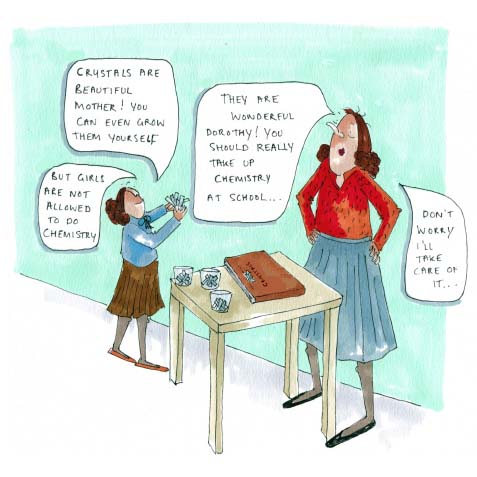By Sophie Arthur
April 13, 2018
Time to read: 4 minutes
To celebrate the MRC turning 105 LMS have created the Heroes of Health comic which shares the ground-breaking stories of eight scientists who contributed to the MRC’s history and changed the lives of people in the UK and across the world.
The comic begins with the formation of the MRC, where we hear the story of the three early pioneers Henry Dale, Almroth Wright and Harriette Chick whose work was instrumental in establishing the MRC’s vision, mission and values and beginning the legacy of using public money to fund Medical Research.

Henry Dale (1875-1968), investigated a fungus called ergot of rye, ergot* was a formidable chemical and biological problem1 that poisoned people, causing them to die. Through studying ergot he discovered the presence of neurotransmitters, one of which was acetylcholine. Almroth Wright (1861-1947), invented a vaccine to protect against typhoid, a bacterial infection that was killing hundreds of thousands of people during the First World War, and Harriette Chick (1875-1977), made the link between rickets, vitamin D, sunlight and cod liver oil whilst working with children in Vienna, coming to the realisation that sunlight must trigger vitamin production.
Our further five stories highlight the work of:
 Dorothy Crowfoot Hodgkin (1910-1994), used x-ray diffraction to determine crystal structures of complicated molecules. She determined the structure of penicillin, vitamin B12 and insulin and won the Nobel Prize in Chemistry in 1964.
Dorothy Crowfoot Hodgkin (1910-1994), used x-ray diffraction to determine crystal structures of complicated molecules. She determined the structure of penicillin, vitamin B12 and insulin and won the Nobel Prize in Chemistry in 1964.
Max Perutz (1914-2002), identified the structure of proteins using x-ray crystallography. He won the Nobel Prize in Chemistry in 1962 for establishing the structure of haemoglobin, modelling it to allow us to see and understand its structure.
Mary Barber (1911-1965), who, whilst working at Hammersmith Hospital, home of LMS, found that bacteria were becoming resistant to penicillin. Her work and interventions helped progress the understanding of microbial resistance and minimised the spread of infection in the hospital.

Mary Lyon (1925-2014), discovered X-chromosome inactivation (also called lyonisation), which greatly advanced the understanding of X-linked inherited diseases, including Duchenne muscular dystrophy and haemophilia, as well as explaining why some mammals having tortoiseshell fur patterns.
Peter Mansfield (1933-2017), the jam jar genius! Work by Peter led to the development of magnetic resonance imaging (MRI). A non-invasive imaging technique which enables imaging of soft tissue and organs, which has revolutionized medical diagnosis. He won the Nobel Prize in Physiology and Medicine in 2003 with Paul Lauterbur.
Take a look at the Heroes of Health comic and find out more about these awesome pioneering scientists.
The current version of Heroes of Health follows the 2013 edition. Thanks to Kirstin and Juli von Glasgow, Andree Molyneux and Brona McVittie for research and ideas and Lindsay McBirnie for illustrations.
Medical Research Council The Medical Research Council (MRC) was established in 1913 and for more than 100 years has been funded by taxpayers through the government’s science budget to study the basis of health and disease. In 2018, we mark the start of a new chapter for the MRC as it joins with other government funded research organisations to form United Kingdom Research and Innovation (UKRI). With a budget of over £6 billion per annum, UKRI will fund research across the arts, technology, engineering, physical, natural, environmental, social, biological and medical sciences, ensuring that the UK has the best possible environment for research and innovation.
For more information or to request a hard copy of Heroes of Health contact:
Scout Davies
Science Communications Officer
MRC London Institute of Medical Sciences
Du Cane Road
London W12 0NN
E:
[1] MR Lee J R Coll Physicians Edinb 2009; 39:365–9 doi:10.4997/JRCPE.2009.416
*In any given ergot extract there could be ergotamine and ergometrine (pressor), acetylcholine (depressor), histamine (largely depressor) and tyramine (pressor).